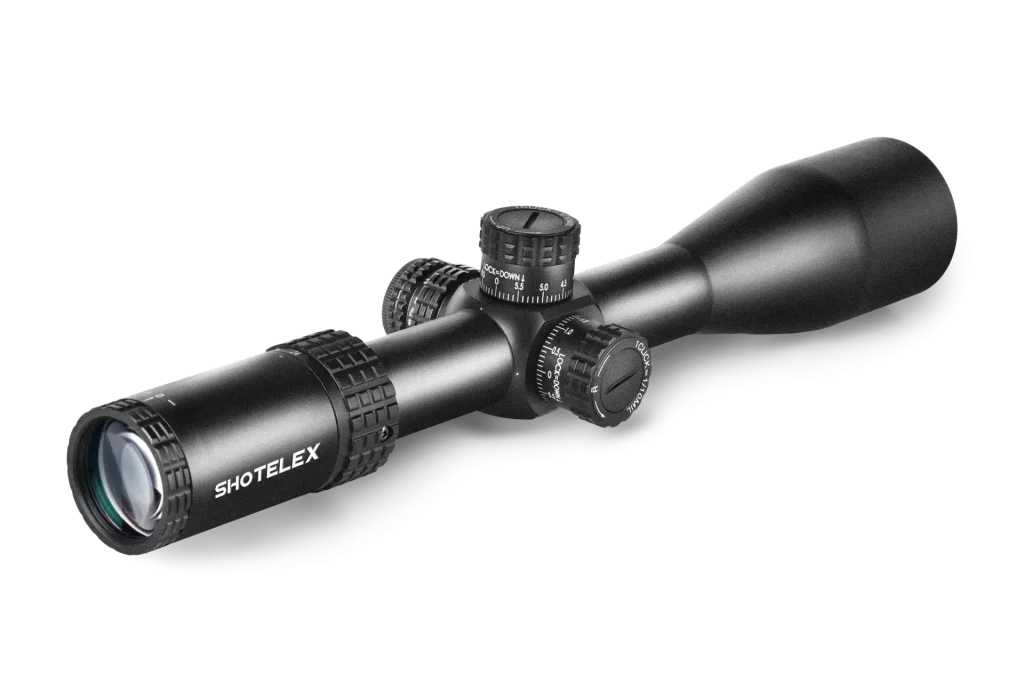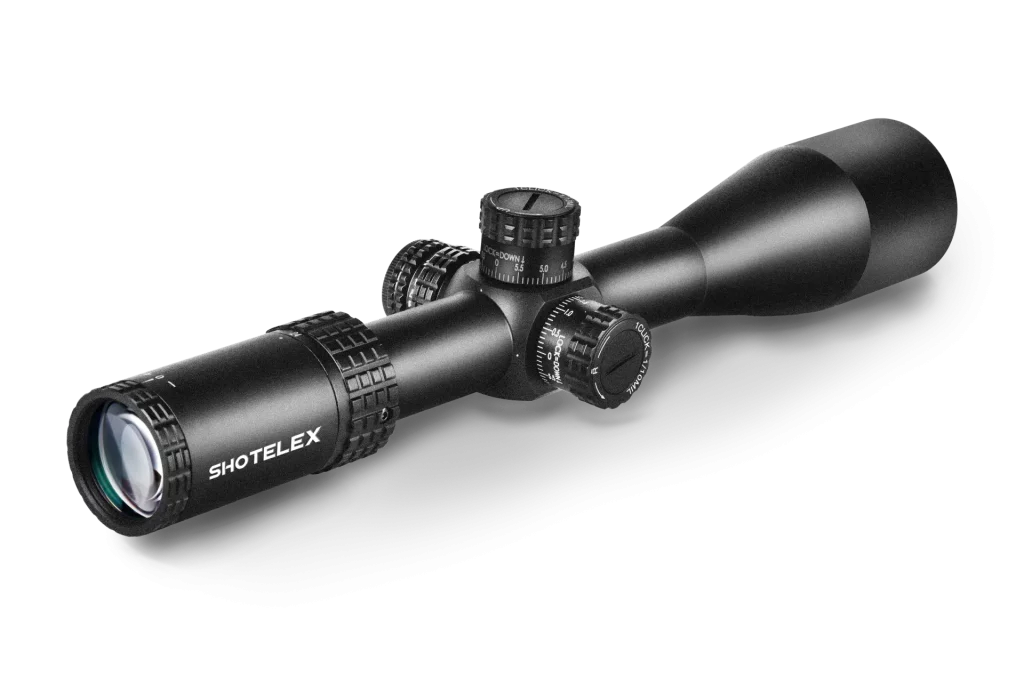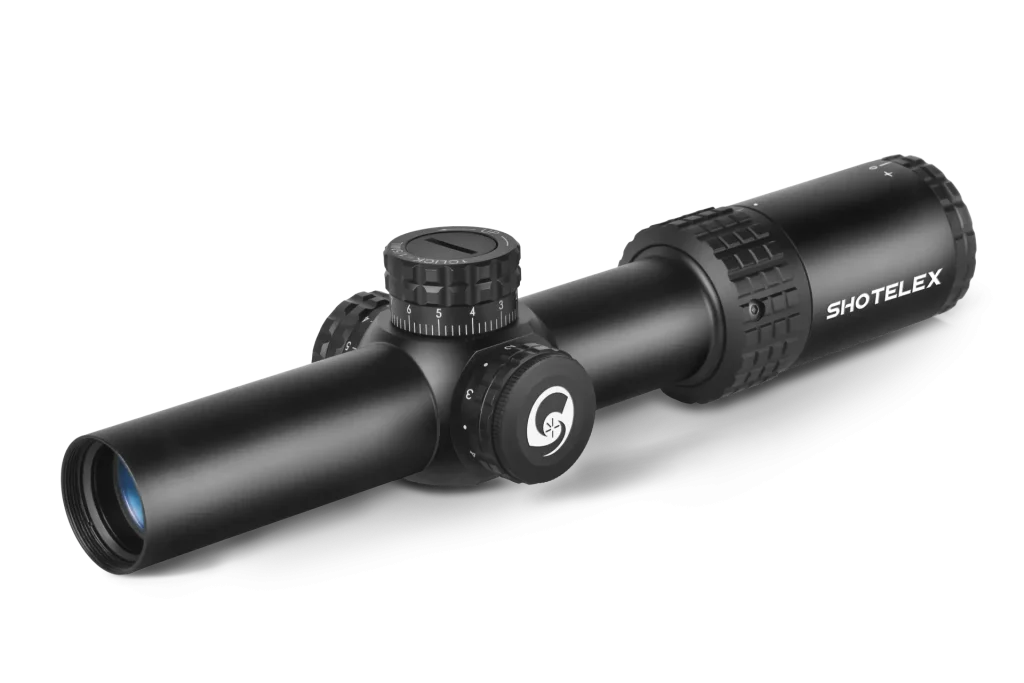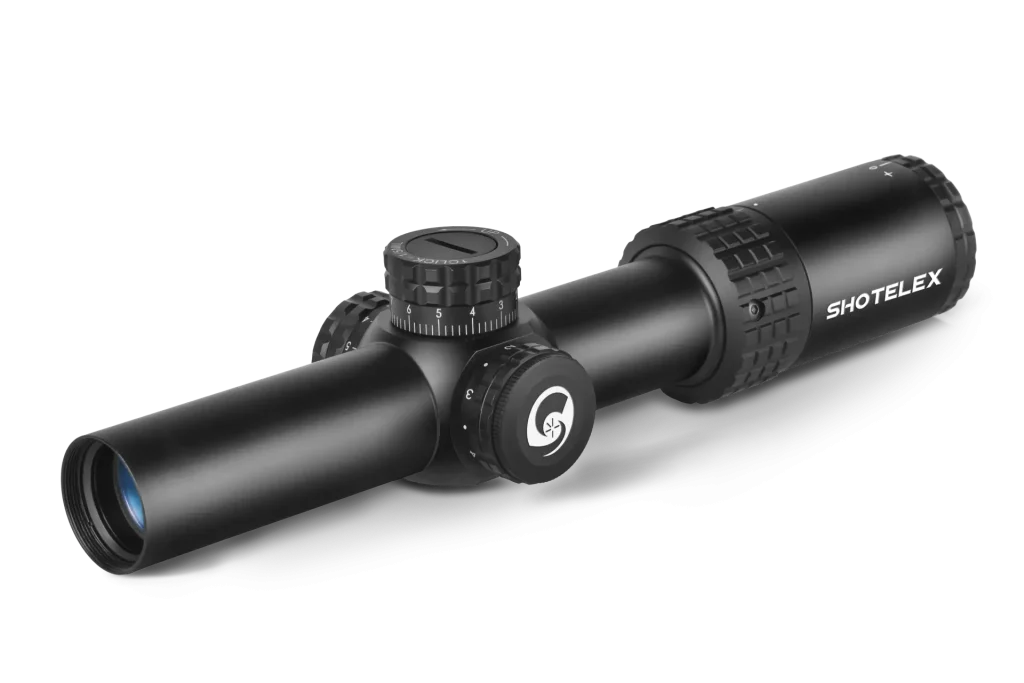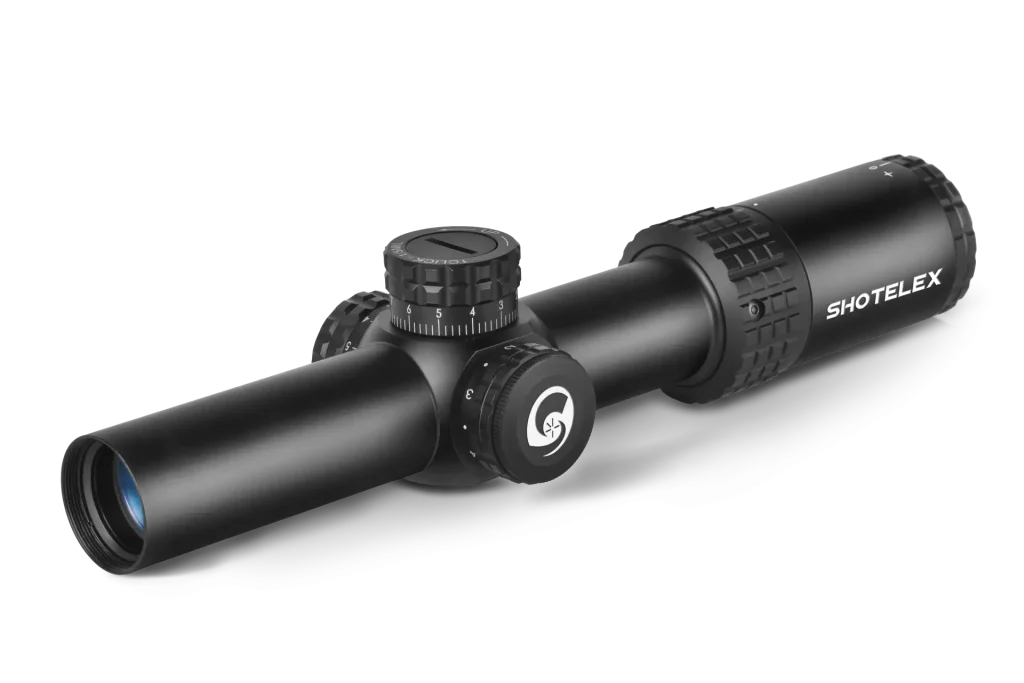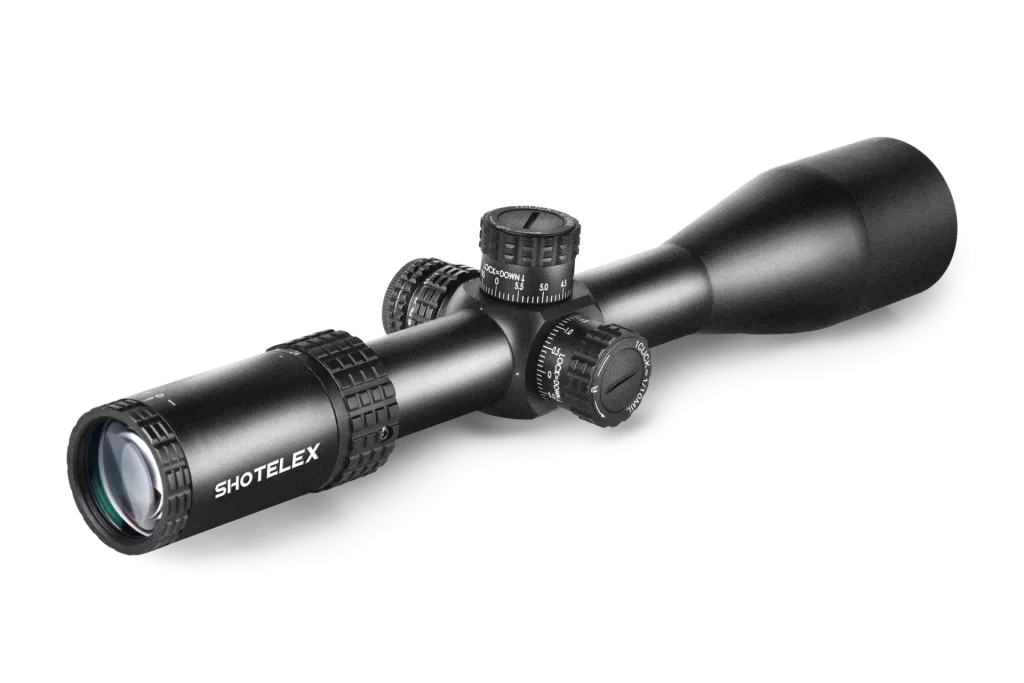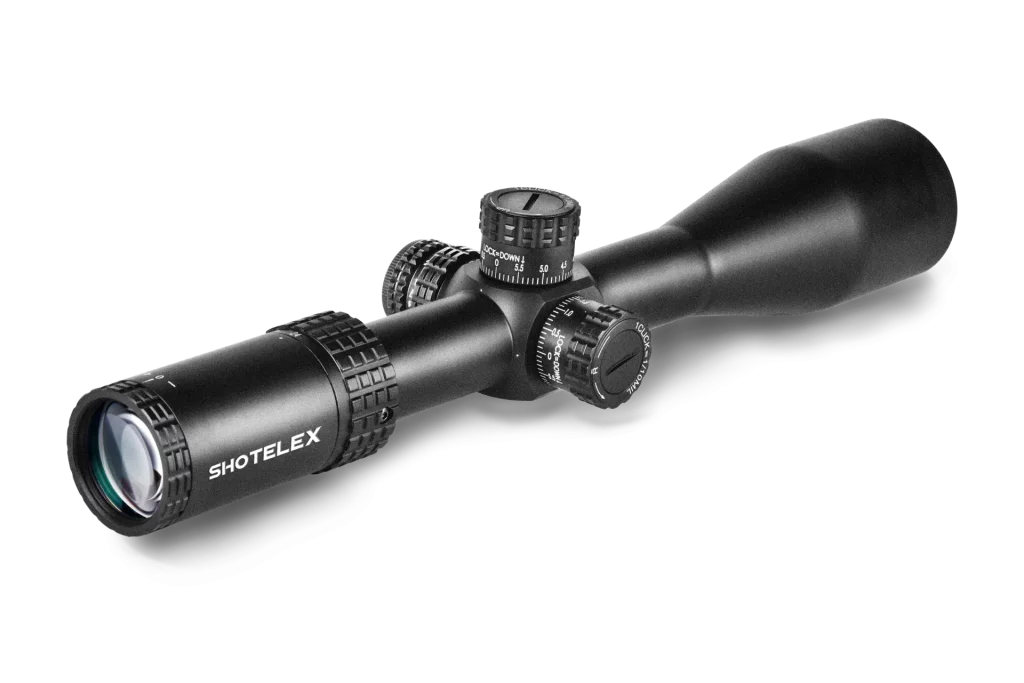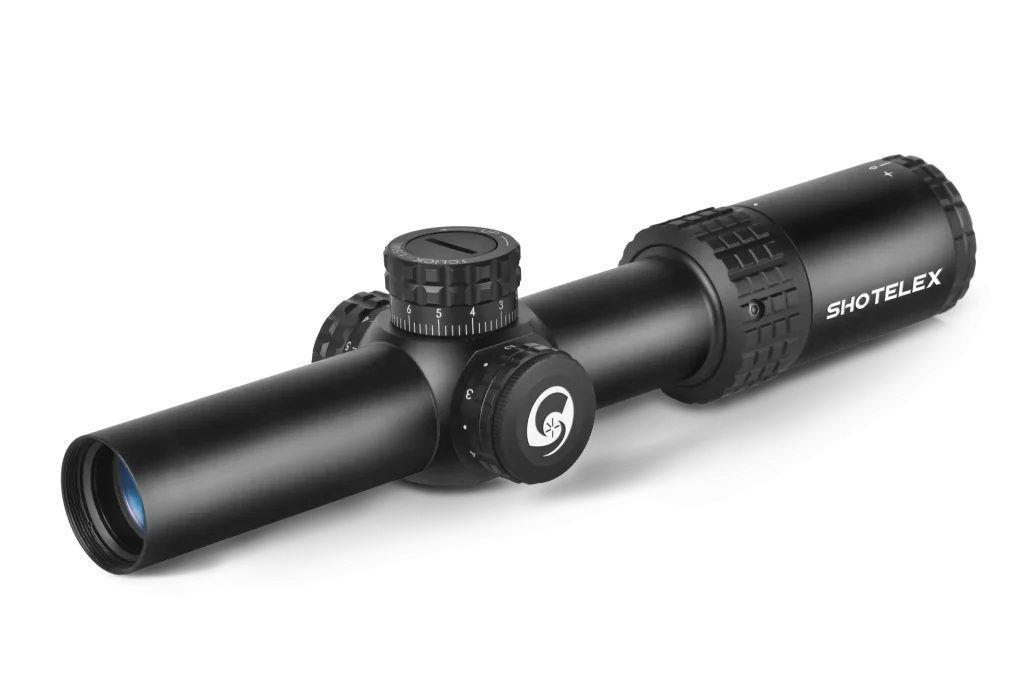How to Read A Scope Reticle? – A Practical Guide
Beginners often find it most disorienting when beginning to use rifles with complex scopes: facing an “active” reticle pattern can be daunting. A reticle serves multiple functions including range estimation, bullet drop compensation and windage adjustment, mastery of which will lead to precision marksmanship rather than basic shooting alone. In this article, we’ll offer a complete understanding of how to read a scope reticle. Let’s get going!
Part 1. What is a Rifle Scope Reticle?
Reticles on rifle scopes, commonly referred to as crosshairs, are optical patterns embedded within a scope’s lens system that act as an aid for shooting accuracy. Reticles come in various designs; most commonly cross-shaped, dot-style or graduated with hash marks or grids which cater specifically for individual shooting requirements.
At its core, reticle is what you see through a scope; the set of lines, dots or patterns that guide your aim. But modern reticles offer much more than this simple guidance, they also help shooters estimate range to target, calculate bullet drop and compensate for wind drift or moving targets without making physical adjustments to their scopes.
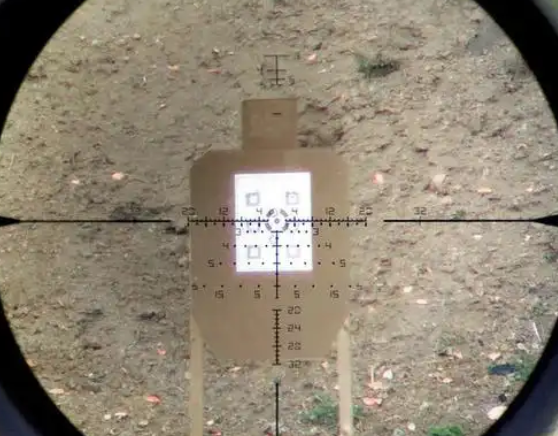
Part 2. Common Types of Scope Reticles
Different shooting scenarios and user preferences have led to the development of a variety of reticle types. Here are some of the most widely used styles:
1. Duplex Reticle
This design is the most classic and beginner-friendly. It features a fine crosshair in the center with thicker lines towards the edges. The bold outer lines naturally draw the eye towards the center, making it ideal for hunting and general purpose shooting. Its simplicity enables quick target acquisition without visual clutter.
2. Mil-Dot Reticle
This reticle, intended for long-range and tactical shooting, utilizes evenly spaced dots (usually 1 mil apart) along the crosshairs to help shooters estimate range, calculate bullet drop, and make windage corrections using angular measurements. While more practice may be needed before becoming efficient with its use, its precision cannot be rivaled.
3. MOA Reticle
Minute of Angle (MOA) reticles are popularly seen in scopes manufactured in the U.S. These fine graduations allow shooters to make precise adjustments, typically equivalent to 1 inch at 100 yards; MOA reticle are preferred by competition shooters and individuals looking for precise control of elevation and wind.
4. Bullet Drop Compensation Reticle
BDC reticles feature pre-calibrated holdover marks to accurately reflect bullet drop at different distances (100 yards, 200 yards or 300 yards). This makes them the ideal solution for hunting or shooting scenarios where multiple targets need engaging at various ranges without needing to adjust your turrets manually.
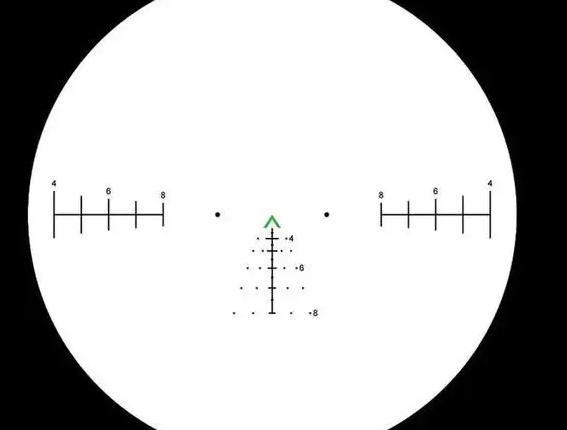
Part 3. How to Read a Rifle Scope Reticle?
An accurate rifle scope reticle serves many functions beyond its physical appearance; from range estimation and bullet drop compensation, to windage adjustment. Here, we explore two of the most widely-used reticles – Mil-Dot and MOA Reticles – as we step through their reading methods step-by-step.
Step 1: Determine Your Reticle Type and Unit System
Before reading your scope reticle, it’s essential that you clarify certain details:
What measurement unit does your reticle utilize?
- Mil (milliradian) — common in tactical and long-range shooting
- MOA (minute of angle) — more common in American optics and precise adjustments
What type of reticle do you have?
- Common types: Mil-Dot, MOA Grid, Duplex, BDC
Is your scope First Focal Plane (FFP) or Second Focal Plane (SFP)?
- This affects whether your reticle scale changes with magnification
Why does this matter?
- Knowing this determines how you perform calculations for range, windage, and elevation corrections.
Step 2: Understand What Each Reticle Mark Represents
You need to understand the “real-world meaning” of your reticle’s markings.
Mil-Dot Reticle:
- One mil = approximately 3.6 inches at 100 yards
- Each dot or space between dots represents an angular value used for range estimation or holdover
MOA Reticle:
- One MOA ≈ 1.047 inches at 100 yards
- More granular, often preferred for precision shooting
Tip: Some scopes have 0.5 Mil or 2 MOA spacing between marks — check your user manual.
Step 3: Use the Reticle for Range Estimation
Using your reticle to estimate range is a key shooting skill. Let’s look at how to do it using a Mil-Dot reticle:
Mil Ranging Formula:
Distance (yards) = (Target size in inches × 27.78) ÷ Number of mils covered
Example: If a deer with an 18-inch shoulder span appears to be 4 mils wide in your scope:
Distance ≈ (18 × 27.78) ÷ 4 = about 125 yards
You can use similar methods with MOA-based reticles, though they often rely more on ballistic charts or apps.
Step 4: Compensate for Bullet Drop (Holdover)
If your target is beyond your scope’s zero range (say, 100 yards), gravity causes the bullet to drop. You must adjust accordingly:
- With BDC reticles, use the pre-marked holdover dots for 200, 300, 400 yards, etc.
- With Mil or MOA reticles, refer to a ballistic chart to determine the required holdover, then aim higher using the correct reticle mark.
Example: At 300 yards, if your chart shows 1.2 Mil drop, aim using the 1.2 Mil mark below center.
Step 5: Adjust for Windage Using the Horizontal Scale
Wind is a major factor in long-range shooting. You can correct for it using your reticle’s horizontal markings:
- Estimate the needed correction based on wind speed and target distance
- Shift your aim into the wind by the appropriate number of mils or MOA
Example: A 5 mph crosswind at 300 yards might require a 0.5 Mil adjustment — aim 0.5 Mil into the wind.
Step 6: Understand Magnification Effects (FFP vs SFP)
Your scope’s magnification can affect reticle accuracy, depending on the focal plane type:
- FFP (First Focal Plane): Reticle scales change with magnification, always representing true measurements, ideal for tactical and dynamic shooting
- SFP (Second Focal Plane): Reticle scale stays fixed; only accurate at one designated magnification (often maximum power)
Tip: Check your scope manual to find out which magnification level gives accurate hold values.
Step 7: Practice and Record Your Results
Theory is great, but practical experience is what builds skill. Here’s how to improve:
- Use printed targets to practice ranging and holdovers
- Record bullet drop and wind drift values at different distances
- Practice in both calm and windy conditions
- Use ballistic apps (like Strelok Pro or Ballistic AE) to calculate and confirm reticle values

Part 4. Practical Tips for Mastering Reticle Reading Effectively
Understanding a scope’s reticle is only half the journey, proficiency comes from consistent practice and smart tools. Here are a few actionable tips to help you better read and utilize reticles in real shooting environments:
1. Train Often—Both On the Range and On the Computer
Practice breeds familiarity. Become familiar with different reticle styles and functions using ballistic simulation computer software or reticle training smartphone apps, all in a controlled environment. Combine this with live fire training, so you can apply what you learned under realistic conditions of wind, elevation, and changing light conditions.
2. Record Your Ballistics
Use a ballistic calculator program (e.g., Strelok Pro, Ballistic AE, or Hornady 4DOF) or an Excel spreadsheet that you create yourself to track how your ammo shoots in your specific rifle. Drop data measured at multiple ranges allows you to more accurately make adjustments or holdovers with your reticle.
3. Choose the Proper Scope for Your Needs
Select a scope that has a reticle pattern suitable to your shooting needs, e.g., hunting, target shooting, or tactical use. Ensure the reticle is clearly etched and readable under conditions. A poorly designed or too complex reticle could defeat you instead of helping.
4. Read the Manual or Manufacturer’s Reticle Guide
Every reticle has its own markings and application. Always refer to the user manual or the manufacturer’s manual in order to clearly know what each line, dot, or number signifies. This is especially important for complex reticles like Mil-Dot, MOA, or BDC systems where the precision of the aim lies on identifying the correct interpretation.
Proper practice and gear will have reading a reticle in a scope become second nature, which means you can place your target earlier and more accurately.
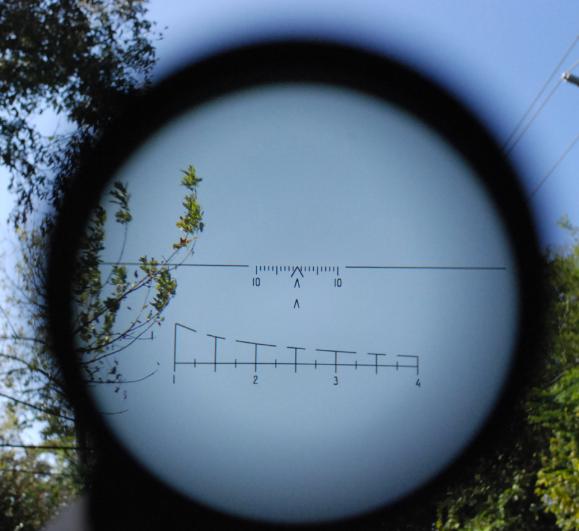
Final Thoughts
Rifle scope reticles may seem complicated at first, but once they make sense to you, they become an invaluable way of improving your aim when shooting. No matter if you are hunting or competing in shooting sports, mastering how to read and use rifle scope reticles will put you one step closer towards becoming an excellent marksman. Shotelex offers an impressive range of performance rifle scopes that support OEM customization.

